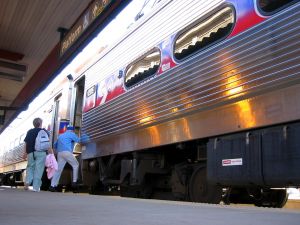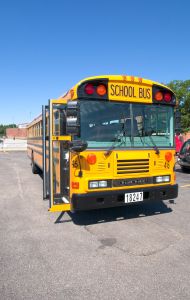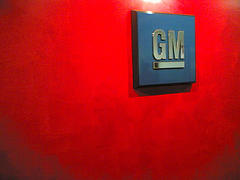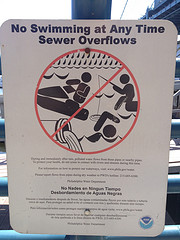
The deadly collision between an Amtrak train and a sport utility vehicle at a railroad crossing in East Oakland on Sunday night that resulted in the death of the driver of the SUV is still under investigation. However, San Francisco train accident attorney Gregory J. Brod would point out that what we do know about the unsettling incident is that it has added yet another figure to the troubling statistical trend for 2014 concerning fatalities and injuries at railroad crossings.
According to the San Jose Mercury News, the fatal collision occurred at about 10:05 p.m. Sunday when an unidentified 48-year-old Oakley man drove his Acura MDX around a barrier onto the tracks at 50th Avenue and San Leandro Street in Oakland and a northbound Amtrak Coast Starlight struck the SUV, killing the motorist. The train, whose point of origin was Los Angeles, was on its way to Seattle carrying 200 passengers and crew and came to a stop at High and San Leandro streets after slamming into the SUV. The Alameda County Coroner’s Office is investigating the incident as an apparent suicide; the motorist was pronounced dead at the scene, while no one aboard the train was injured.
Whether or not officials determine that the deadly incident on Sunday was a suicide this much is clear: when there is a collision between a train and a motor vehicle, damage and the potential for injury or death will fall lopsidedly on the later. Indeed, according to the train safety advocacy group Operation Lifesaver, the force of a 30-car freight train hitting a motor vehicle is equivalent to that of the same motor vehicle striking a aluminum soda can – a decidedly no-contest equation. And a motorist is 20 times more likely to die in a collision involving a train than in a crash involving another motor vehicle.
The most recent statistics from the Federal Railroad Office of Safety Analysis detail a less-than-reassuring picture of railroad crossing accidents involving trains and motor vehicles in the United States, including the following:
- There were 970 such incidents in 2011, 970 in 2012, 1,022 in 2013 and 1,130 from January through June 2014, which represents a 16.5 percent increase from 2011 to this year.
- There were 135 fatalities in 2011, 116 in 2012, 127 in 2013 and 137 from January through June 2014, which represents a 1.9 percent increase from 2011 to this year.
- There were 517 injuries in 2011, 432 in 2012, 482 in 2013 and 395 from January through June 2014, which represents a 23.6 percent decrease from 2011 to this year.
The picture for pedestrians or so-called trespassers who cross railroad tracks has been even more grim during the 2011-14 period, as there were 188 fatalities in 2011, 195 in 2012, 208 in 2013 and 262 from January through June 2014, an increase of 39.4 percent. With respect to injuries due to collisions between trains and pedestrians, there were 168 in 2011, 220 in 2012, 202 in 2013 and 197 from January through June 2014, an increase of 17.3 percent. Not surprisingly, the odds are stacked even more heavily against pedestrians than motor vehicles when they are in the path of a moving train.
Continue Reading ›
 San Francisco Injury Lawyer Blog
San Francisco Injury Lawyer Blog













 Earlier this summer, sports lovers in America joined those across the globe in watching (and cheering for) a game loved the world over – soccer. While long-popular in other countries, Americans have been slow to embrace soccer, but the game is slowly infecting adults and children alike. As people begin to play the sport, not just watch from the sidelines, soccer injuries and particularly
Earlier this summer, sports lovers in America joined those across the globe in watching (and cheering for) a game loved the world over – soccer. While long-popular in other countries, Americans have been slow to embrace soccer, but the game is slowly infecting adults and children alike. As people begin to play the sport, not just watch from the sidelines, soccer injuries and particularly 

 students were on board when the crash occurred on Thursday August 14 at 6:30 A.M. on Grizzly Flat Road in Somerset, El Dorado County. An SUV driven by 24 year old Steven Gruber hit a school bus on the two-lane road. Police arrested Gruber on suspicion of driving under the influence. Five students and the bus driver suffered minor injuries and two students were taken to the hospital as a precaution. Another vehicle was also involved in the incident, although it is not known whether its occupants were injured.
students were on board when the crash occurred on Thursday August 14 at 6:30 A.M. on Grizzly Flat Road in Somerset, El Dorado County. An SUV driven by 24 year old Steven Gruber hit a school bus on the two-lane road. Police arrested Gruber on suspicion of driving under the influence. Five students and the bus driver suffered minor injuries and two students were taken to the hospital as a precaution. Another vehicle was also involved in the incident, although it is not known whether its occupants were injured. While note every recall involves a problem that has been known to cause accidents, a piece in last week’s
While note every recall involves a problem that has been known to cause accidents, a piece in last week’s  One way sewage can get into our waterways is following a water main break. While sewage isn’t mentioned,
One way sewage can get into our waterways is following a water main break. While sewage isn’t mentioned,